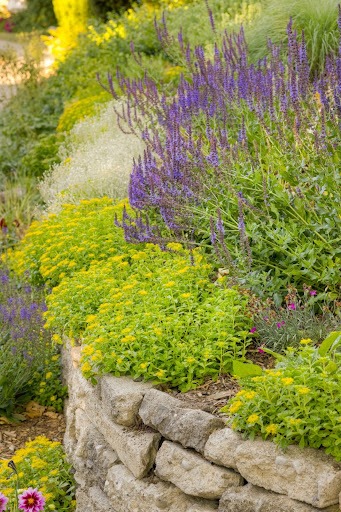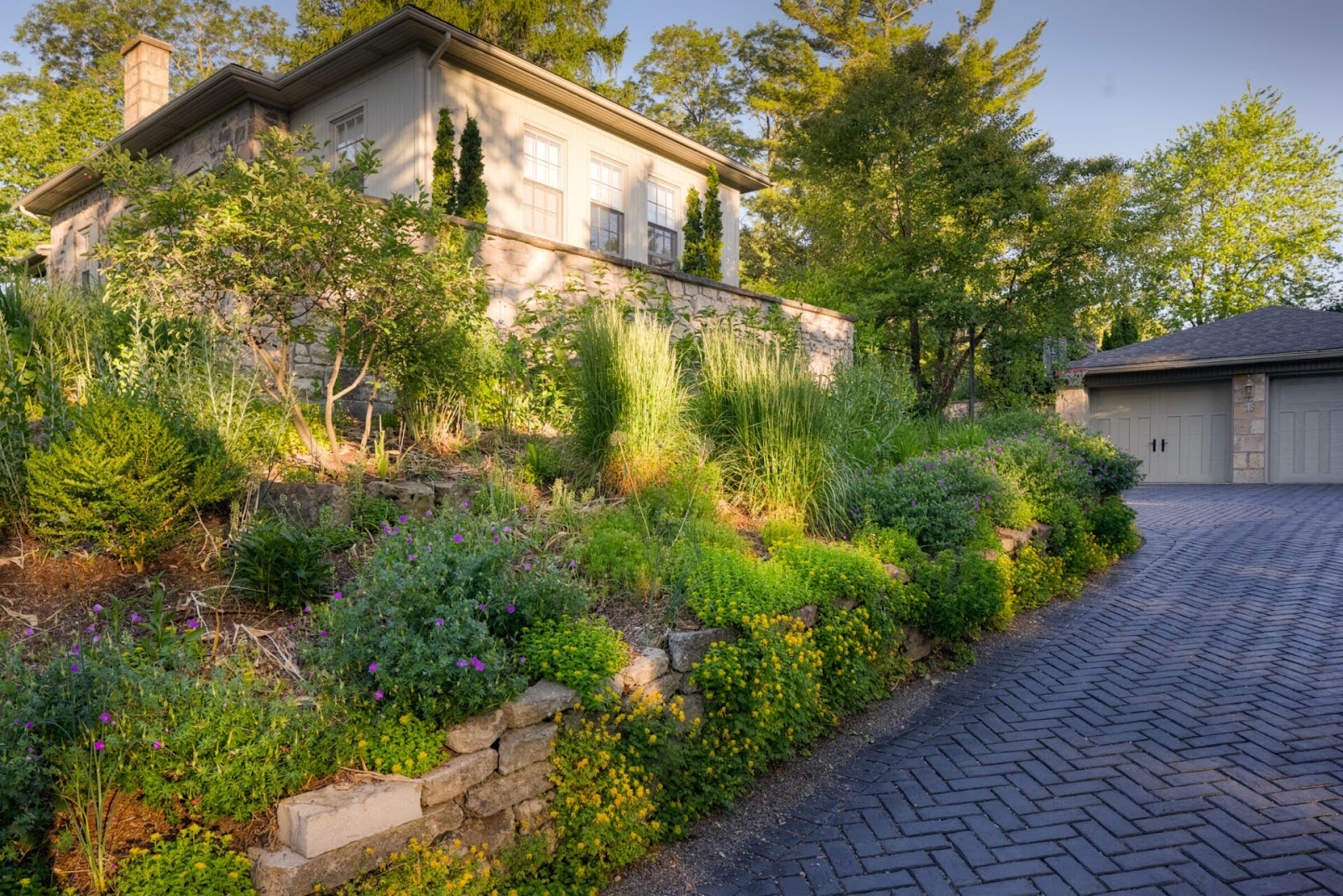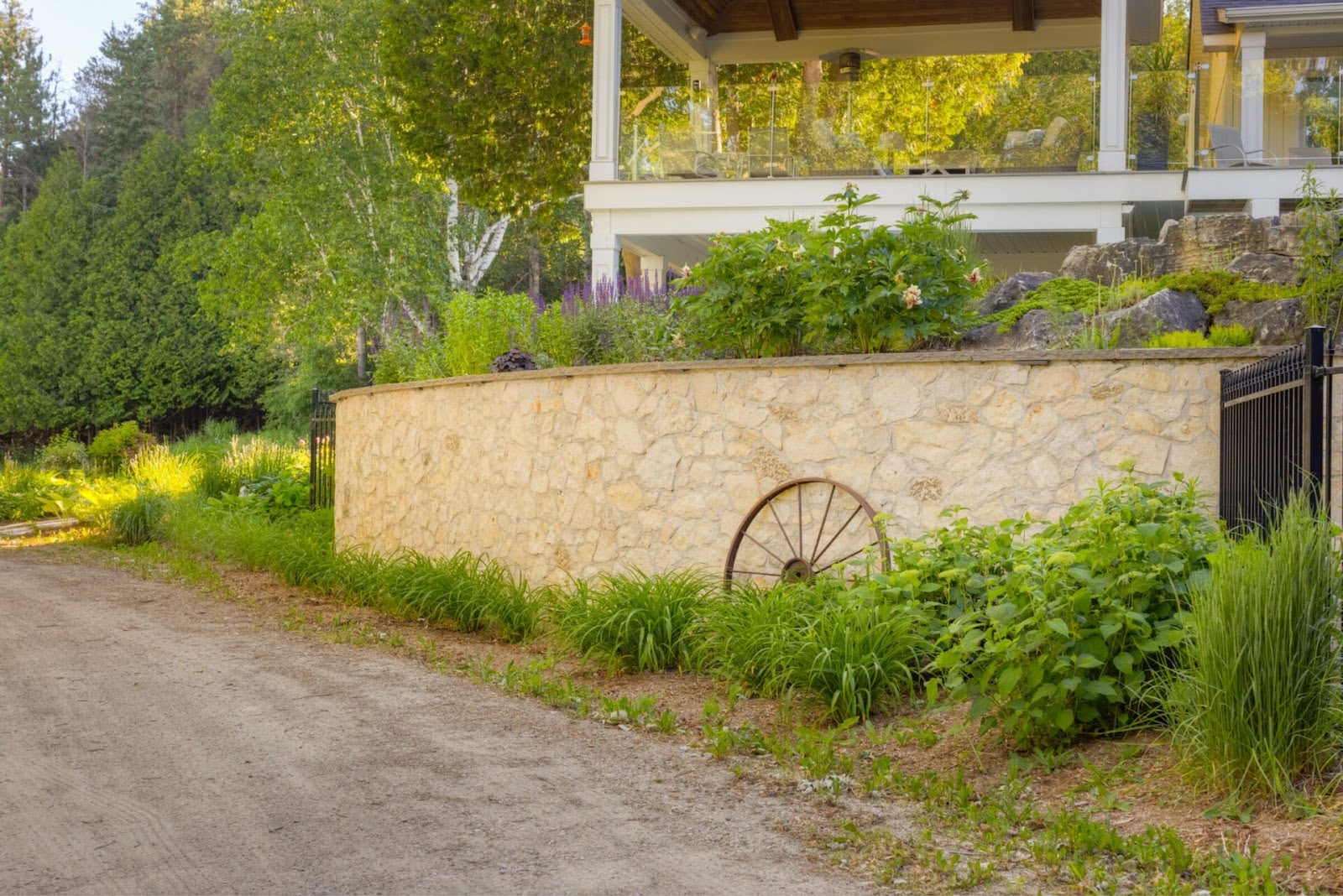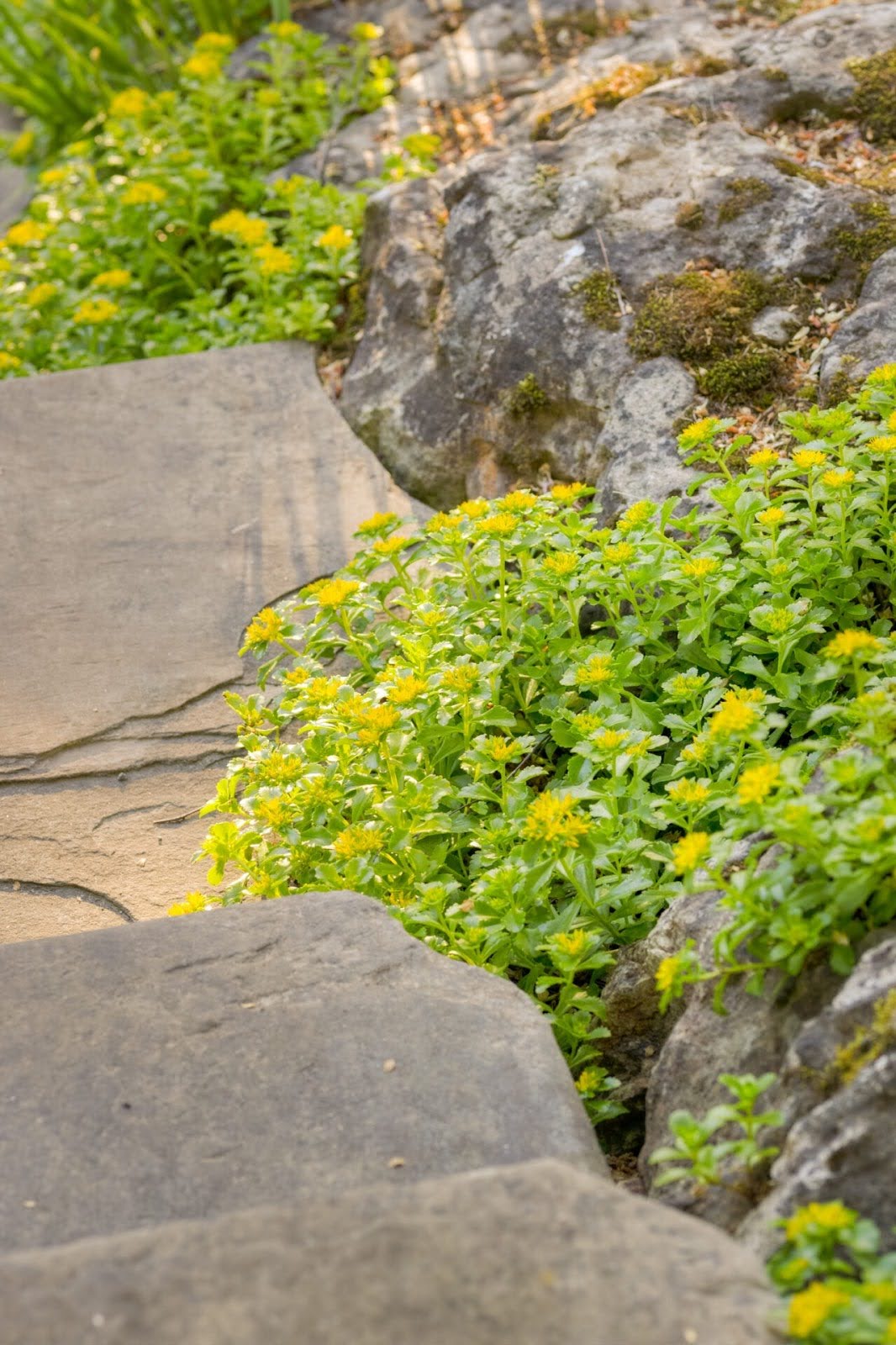Sloped or uneven terrain on your property can often feel like a challenge, limiting the potential of an outdoor space. The problems with these landscapes lie not only in their difficult navigation, but also in the risks of soil erosion and poor drainage. It can be hard to fully use your sloped yard for gardening or entertaining.
By carefully adding elements like stone walls, raised garden beds, and curvy paths, you can transform even the toughest land into a landscape that looks welcoming and classic. Terraces open up possibilities for layered planting, unique design elements, and quiet corners perfect for reflection. Picture a garden where each area brings something new. You see bright flowers in bloom, smell fresh herbs, and walk on stone paths that guide you up a gentle staircase.
As an expert landscape construction company, we’ve outlined the principles of multi-level garden design, its benefits, and how to craft a harmonious space using elements like stone staircases and terraced beds. By the end, you’ll see how a sloped landscape can become a sanctuary that tells its own story.
What Is Multi-Level Garden Design?

Multi-level garden design is the practice of creating terraces or distinct levels within a sloped or uneven outdoor space. These levels, separated by stone retaining walls or natural staircases, transform otherwise difficult-to-use land into a flowing and purposeful garden.
Creating a multi-level garden is like composing a landscape poem. Each terrace, each stone, each plant contributes to the story being told. With the right combination of terraced garden beds, hardscaping, and careful drainage solutions, you can have a garden that invites exploration and offers a new perspective at every level.
Terraced Garden Beds
Terraced garden beds form the heart of a multi-level garden. These raised areas of soil create specific planting places and help grow different plants in the best conditions.
More than just practical, these terraces offer moments of beauty and discovery, as each level reveals a different layer of greenery.
Raising the soil in terraces also improves drainage, preventing water from pooling and causing damage to plants. Whether filled with vibrant flowers, aromatic herbs, or leafy shrubs, terraced beds bring life and structure to the garden.
Hardscaping Elements
Hardscaping elements like stone pathways add both form and function to a multi-level design. Retaining walls, crafted with natural stone, offer strength and stability while echoing the enduring beauty of nature. Pathways made from flagstone or gravel weave through the garden, inviting quiet walks and moments of reflection.
Stone staircases, whether straight or gently curved, connect the different levels, turning the journey through the garden into an experience. Each step becomes a transition, offering new views and a sense of progress.
Drainage Solutions
Proper drainage is essential for any garden, especially one with multiple levels. Without careful planning, water can erode soil, damage plants, and undermine the structure of retaining walls. By designing terraces with slight slopes and gravel layers or drains, we can guide water gently through the landscape.
Weep holes in retaining walls allow water to escape, preventing pressure buildup and ensuring the walls remain stable for years to come. This attention to drainage n protects the garden and nurtures healthy plant growth by maintaining balanced moisture levels.
Benefits of Multi-Level Gardens for Sloped Spaces

Sloped spaces present unique challenges, but with multi-level garden design, these challenges become opportunities. Here are some of the key benefits of transforming a sloped landscape into a tiered garden:
Erosion Control
A sloped garden is often vulnerable to erosion, as rainwater can wash away soil and nutrients. Multi-level design combats this by stabilizing the soil with retaining walls and terraces. Each level acts as a barrier, slowing down water flow and keeping the earth in place.
Retaining walls, when built with care, can last for decades, offering both protection and beauty. The interplay of stone and soil creates a harmonious balance that feels as though it has always belonged to the land.
Improved Drainage
Water is a precious resource in any garden, and managing its flow is crucial. Terraces naturally direct water down the slope in a controlled manner, reducing the risk of pooling and ensuring that each level receives just the right amount of moisture.
In areas with heavy rainfall, additional drainage solutions like French drains or gravel channels can be added to further manage water flow. The result is a garden that thrives in both wet and dry conditions.
A Canvas for Plant Diversity
Multi-level gardens offer the perfect opportunity to create diverse planting zones. Each level can be dedicated to a specific type of plant, from sun-loving perennials to shade-tolerant shrubs. This layered approach allows for more creativity in plant selection and arrangement.
Imagine walking through a garden, with each level offering a new scent or color. You might find lavender on one terrace, bright hydrangeas on another, and a peaceful spot with ferns and moss in the shade.
A Landscape That Tells a Story
A multi-level garden invites exploration. Each path leads to something new, such as a hidden bench, a quiet pond, or a bed of wildflowers swaying gently in the breeze. Stone walls, pathways, and staircases don’t just serve a functional purpose; they create a journey, offering moments of surprise and serenity.
These gardens feel personal, as though they were shaped by hand over generations. They invite families to gather, children to explore, and friends to pause and admire the view.
How Retaining Walls Prevent Erosion

Retaining walls are the backbone of a multi-level garden. These sturdy structures keep the soil in place, prevent erosion, and define the shape of the terraces.
Knowing the various types of retaining walls is important for designing a multi-level garden.
Dry-stack stone walls are built by carefully stacking stones without mortar. This method allows for natural drainage and gives the wall a rustic, organic feel. Dry-stack walls blend seamlessly into the landscape, as though they’ve always been part of the terrain.
Mortared stone walls, on the other hand, offer more stability and a polished appearance. The use of mortar ensures that the wall can support greater weight, making it ideal for higher terraces.
Both types of walls can be crafted from locally sourced stone, adding a connection to the land.
A well-built retaining wall is more than a structure, it’s a statement. The texture of the stone, the curve of the wall, and the way it meets the earth all contribute to the garden’s character. These walls hold stories, shaped by skilled hands to stand the test of time.
Creating Pathways & Stone Staircases

Pathways and staircases guide visitors through the garden, offering both practicality and beauty. A winding path invites a leisurely stroll, while a stone staircase beckons you to climb higher and see what lies beyond. Adding stone landscape edging along pathways boosts the garden’s beauty while clearly defining its structure and preventing soil erosion.
Designing Pathways with Intention
Paths should feel natural, as though they’ve always been there. Using materials like flagstone, gravel, or reclaimed brick add texture and charm. Wide pathways encourage gathering, while narrower paths create a sense of intimacy.
Consider adding subtle curves to the path, leading the eye and the feet on a gentle journey. Planting along the edges softens the transition between hardscape and greenery, creating a seamless flow.
Building Staircases that Inspire
Stone staircases can be simple or grand, straight or curved. Each design choice adds to the garden’s personality. Incorporating handrails made from wood or wrought iron can enhance both safety and style.
Steps should be wide and deep enough for comfortable walking, and a slight overhang on each tread can create a classic look. With thoughtful design, a staircase becomes more than just a means to an end—it becomes part of the garden’s story.
Choosing Plants for Terraced Spaces

The plants you choose for a multi-level garden bring it to life. Different terraces offer different conditions, from full sun to partial shade, allowing for a rich variety of plant life.
- Perennials: Lavender and daylilies are excellent choices for adding vibrant colour and lovely fragrance to your terraced garden. Their hardy nature makes them ideal for different planting zones.
- Shrubs: Boxwood and juniper provide year-round structure and greenery. These shrubs create a natural boundary and add depth to the landscape.
- Ground Covers: Creeping thyme and moss are perfect for filling gaps between stones while preventing soil erosion. They create a lush, carpet-like effect that blends seamlessly with the stonework.
- Herbs and Vegetables: Raised beds are a great way to grow herbs like rosemary and thyme, as well as vegetables like tomatoes.
- A Terraced Garden: This can become a functional kitchen garden, providing fresh ingredients right outside your door.
A multi-level garden with stone walls offers more than just a practical solution for sloped areas or low-maintenance front yard landscaping. It fosters a deep connection with nature. Each terrace shares a unique story, every pathway encourages exploration, and each stone reflects skilled craftsmanship and attention to detail.
If you want to transform your outdoor space into something special, contact Elements Hardscaping Inc. for a consultation today.
